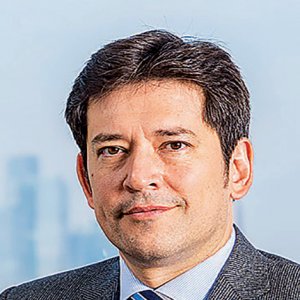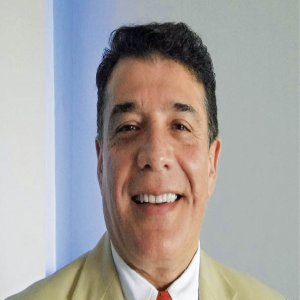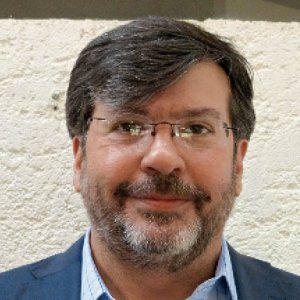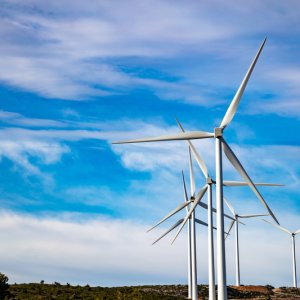Laying the Foundations for Mexico's Marine Wind Sector

After living in the UK for 17 years, Dr. Vanesa Magar, Senior Researcher at CICESE, came back to Mexico in 2014 with the idea of developing the Mexican coastal wind sector. InTrust Global Investment (InTrust) is helping the project advance with permits, finding clients for the coastal wind farm, and helping with planning, scheduling, and with the business plan. “The plan is to start with a wind farm in an offshore area near a region where wind energy resources are also exploitable in the coast and in the nearshore, so that we can have a departing point for developing a coastal wind farm. This, in turn, will allow us to develop the skills and the expertise in the field of coastal wind energy. We then want to expand the wind farms toward the sea within 10km of the coast, where we can relatively easily build an offshore wind farm with our previous experience,” she explains. Ideally, the project would be located in the Gulf of California because of the offshore wind potential that can be combined with other marine energy sources, such as tidal and hydrokinetic.
Dr. Magar has encountered difficulties in disseminating the benefits of her initiative, mainly changing the mindset in a country where windfarms are not a common feature. “I believe that although inland resources are easier to exploit, in the long term we should have a balance between offshore and onshore energy generation projects.” She argues that, rather than using all the land for renewable energy projects, it would be more beneficial to install an offshore wind farm or a marine energy plant, which could also be used to produce clean water through desalination. “The desalinated water could be used to improve land for agriculture, because viable agricultural activities are challenging in the northern part of the country due to water scarcity.” This would also give an alternative source of income to fishermen, who in some parts of Mexico are prohibited from fishing by the government, in order to protect endangered marine species. “If clean water is provided, the fishermen could also start to think about farming, agriculture, or other potential opportunities derived from this project.”
One of the converging points in the interests of Dr. Magar and InTrust is their interest in community development Just like her ally, Dr. Magar deeply believes that local communities should be involved because they will be affected by the project. “These are not just commercial developments that benefit someone outside the project, but they have to yield benefits to the communities and help in the development of the rural and coastal regions in Mexico.” As partners of InTrust, Dr. Magar’s team can consider similar projects in areas with many indigenous groups who have been historically disadvantaged, like the Seri people in Sonora, and other communities along the coast. “It is important to think of a long-term plan to make these communities sustainable and more resilient to climate change,” says Dr. Magar.
The Energy Reform will facilitate the initial stages of the project through the opening of the market, says Dr. Magar. “Just like new players will come into the country, we will bring talent from abroad so that high-level, specialized offshore renewable energy skills are availablelocally. These specialists, together with researchers and university professors, will train the local populations and university students in the development of technical, financial, management, and other required skills.” Skilled worked will also have to be brought in for the installation of the structures, to build the workshops where turbines will be stored, and to install the testing and monitoring instrumentation.
The cost of the farms, explains Dr. Magar, depends on their distance from the coast, so projects within 10km of the coast are not much more expensive than onshore wind farms. Also, costs tend to decrease as the installed capacity increases. “The first projects using the same technology are always expensive, and then the costs decrease because developers gain the expertise, the infrastructure, and the local supply chain.” Dr. Magar explains that in Europe, increasing the installed capacity has not decreased the costs, mainly due to developers moving further offshore. This observation suggests that Mexico could keep costs steady once it develops the necessary skills and infrastructure. “Mexico has an extensive coastline with many prime locations for exploiting wind energy resources, so several nearshore wind farms could be built before the need to move further offshore arises,” she highlights and adds that starting with nearshore developments will gradually cause the prices to decrease. “We need to work slowly to convince investors that this is a good opportunity, which is why we explored installation of a coastal wind farm first. Coastal windfarms are bankable because the energy can be sold at a competitive price.”
Since this type of energy project is new to the authorities, Dr. Magar’s team will help with the environmental assessments by providing information collected from wind farms in Europe or Japan. “A lot of work has been done in Europe regarding the environmental impact of similar projects. For example, there is a published report in PLOS ONE on the impact of offshore wind farms on pelagic bird populations. In fact, we are collaborating with some universities in France and the UK in assessing the environmental impact of offshore wind farm foundations. We have been actively involved in some of the studies conducted in Europe, therefore we are familiar with the effects of these projects,” she details. Since the members of
Dr. Magar’s team are specialists on physical oceanography studies, this is the area they are concentrating on. However, they have partners within the bird research community and marine ecology departments, who are studying impacts on mammal populations. Dr. Magar believes it is necessary to identify the key players in the communities of researchers specialized in either coastal populations or offshore populations so that they can be involved in the project from the beginning.
“Hopefully, by 2018, we will have our coastal wind farm connected to the grid and a significant portfolio of clients buying energy from us. By then, we are expecting to have developed most of the local infrastructure that we will need for the offshore development,” she shares. The team expects to start the offshore wind farm installation by 2020-2022. At the moment, Dr. Magar is involved in tidal and hydrokinetic energy research projects with CICESE students and interns from CONACYT. “These projects are far from commercial, but we hope we will be able to make that transition for tidal and hydrokinetic energy within the next ten years,” she says.



















